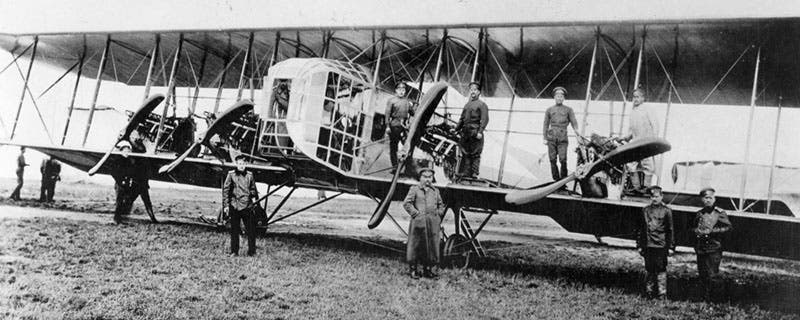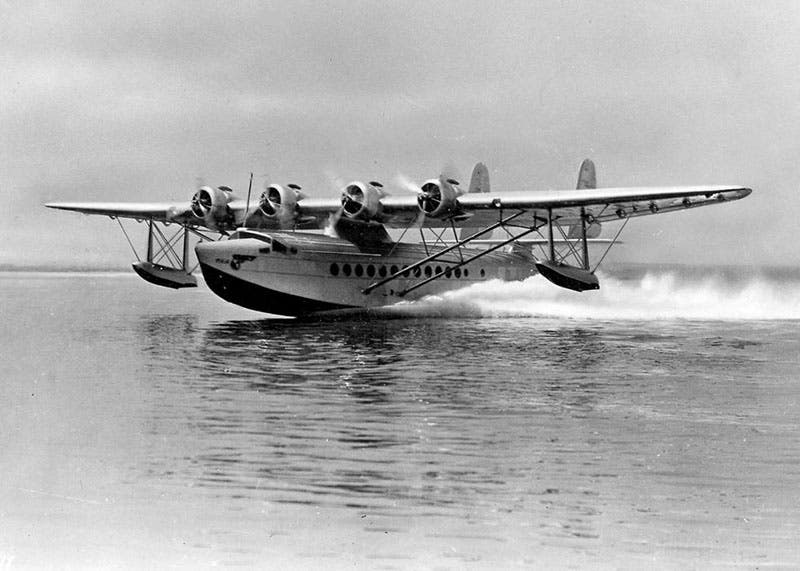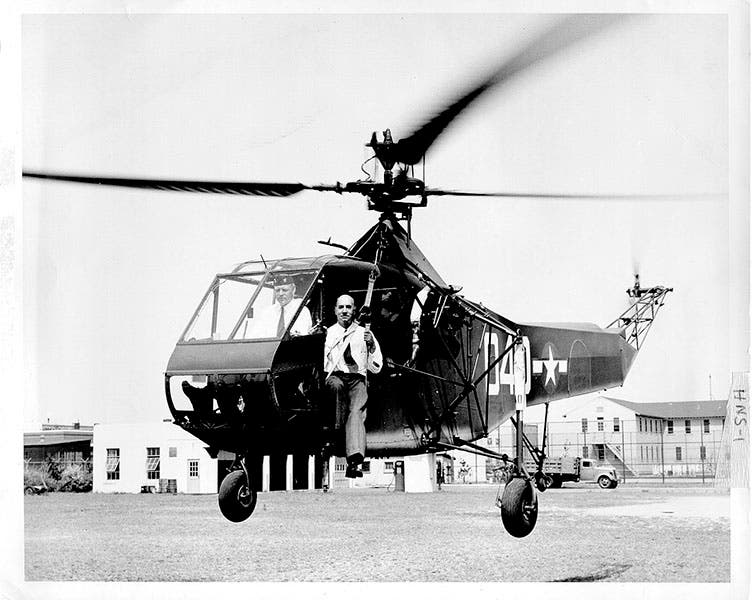Scientist of the Day - Igor Sikorsky
Igor Sikorsky, a Russian/American aeronautical engineer, was born May 25, 1889. Growing up in Kiev, he took an early interest in aviation, prompted by the success of the Wright brothers, and he designed and built two helicopters by the time he was 20. But he was ahead of the technology of the times, and neither helicopter could lift its own weight, i.e., get off the ground. So he turned his attention to fixed wing aircraft, and three years later, in 1912, his designs were winning awards. In four more years, he was designing and producing the finest aircraft in Russia. His S-27 four-engine airplane, converted to a heavy bomber, was in production by 1916 (second image, below).
But the Russian revolution in 1919 changed Sikorsky’s fortunes in Russia; he felt that he had been targeted by the Bolsheviks (I do not know why), and he fled the country, ending up in the United States, where he resumed designing aircraft. By 1928, he had established the Sikorsky Corporation on Long Island; it would eventually relocate to Stratford, Connecticut. The company produced a variety of aircraft, the most notable being the S-42 Flying Boat, which was bought by Pan-American Airlines and became the extremely successful ocean-crossing Pan-Am Clipper (third image, below). Each of Sikorsky's designs was assigned a model number beginning with "S-", so the designation S-42 for the Flying Boat provides an indication of the fertility of Sikorsky's aeronautical mind.
In 1939, Sikorsky returned to helicopter design, now that engines were light enough and materials strong enough. Helicopters were already being flown in Germany, so Sikorsky did not really invent anything new on a large scale, although for all I know some of his designs for rotor heads may have been essential innovations. Nor did he invent the tail rotor, the essential device that keeps a helicopter from precessing in the opposite direction of the main rotor. But it is said that the configuration of rotors that Sikorsky settled on is the one still used today by most helicopters today.
His first helicopter model was the VS-300, which his firm built in 1939 and he tested himself (fourth image, just above). Three years later, a slightly larger version was produced, the R-4, and this one went into production, the first helicopter to come off a production line (fifth and sixth images, below). This was in 1942, when the U.S. was deeply involved in World War II. Sikorsky helicopters did not really play a role in the outcome of the war (nor did the German helicopters on the other side), but they did come into play in 1944-45 as rescue transports. There are photographs, for example, or R-4 Sikorskys evacuating troops from Iwo Jima in 1944.
The most astonishing thing about Sikorsky helicopters is that they went from prototype to fully functional machines in less than five years. A Sikorsky helicopter of 1945 could easily be mistaken for a helicopter from the Vietnam war. Once Sikorsky was done with the helicopter, most of the subsequent changes were cosmetic.
An original VS-300 prototype helicopter, one flown by Sikorsky himself, is in on display at the Henry Ford Museum in Dearborn, Michigan (the museum likes to call itself "The Henry Ford," but I find that about as pompous as the British Open deciding to refer to itself as "The Open", and I decline to go along with either affectation). There are many others of Sikorsky’s earlier aircraft on display elsewhere, especially in Russia.
You have probably noticed that Sikorsky wore a fedora, even when testing aircraft in flight. The legend grew that the hat protected him from mishap, and that it would protect anyone who put it on, even for a few moments. So Sikorsky got many requests from visiting pilots to don his fedora, and Sikorsky surprisingly complied with all such requests. The fedora survives in the Igor Sikorsky Historical Archives in Stratford, along with many other pieces of Sikorsky memorabilia. I do not know if the Archives are accessible to public visitors, but you may consult it online.
Dr. William B. Ashworth, Jr., Consultant for the History of Science, Linda Hall Library and Associate Professor emeritus, Department of History, University of Missouri-Kansas City. Comments or corrections are welcome; please direct to ashworthw@umkc.edu.











